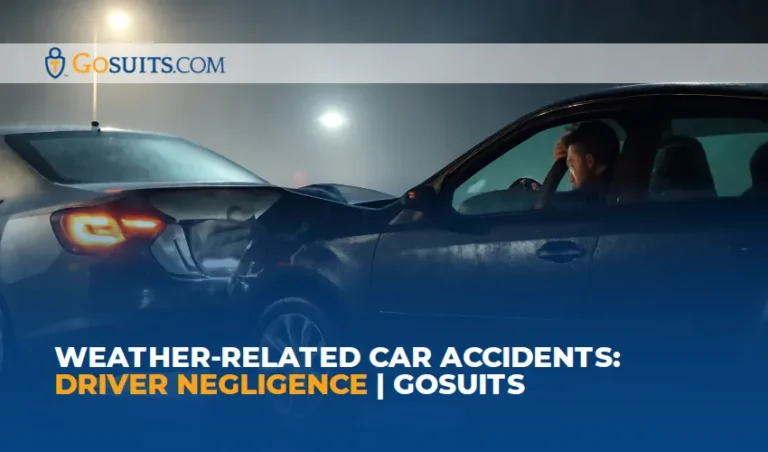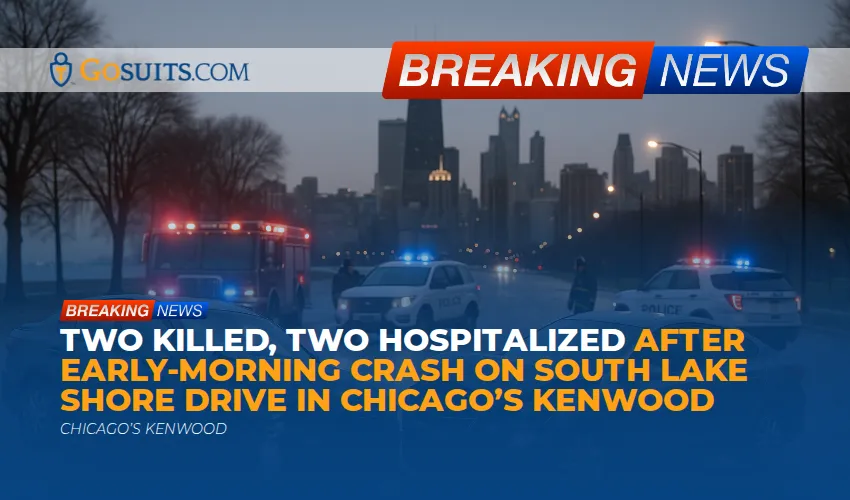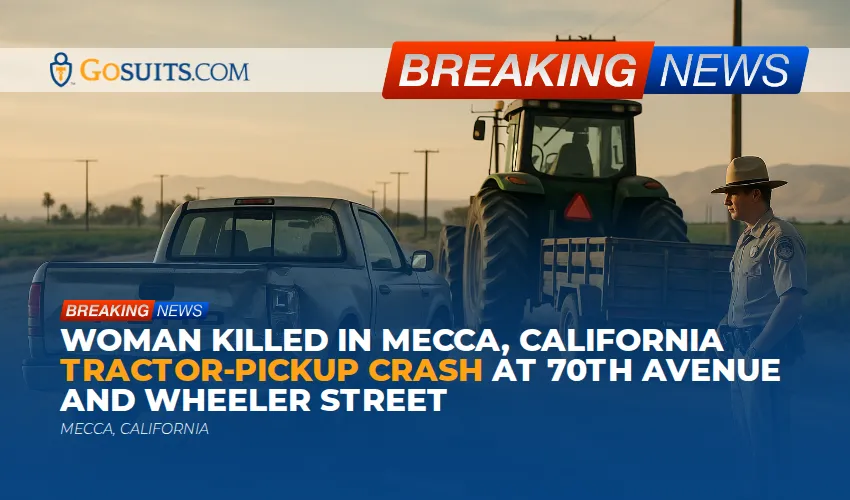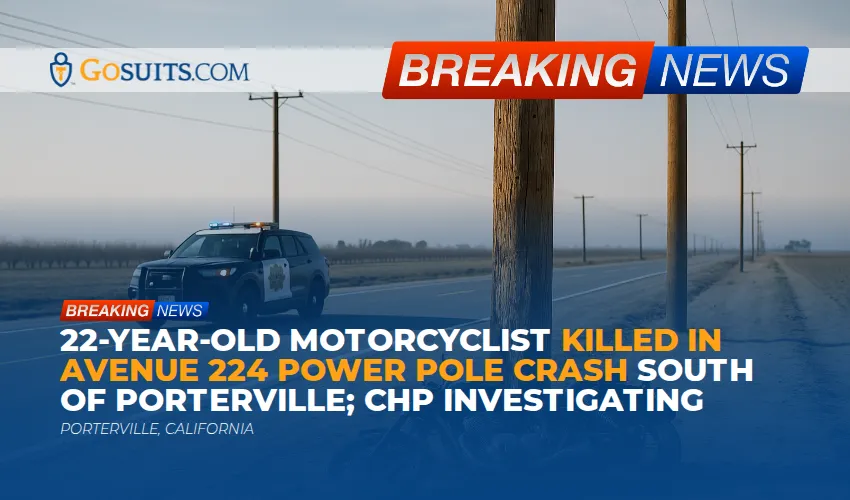- What counts as driver negligence in weather-related car accidents?
- Who is at fault in a weather-related accident, and can you sue?
- How common are weather-related crashes and what conditions are most dangerous?
- How do Texas, California, and Illinois laws treat negligent driving in bad weather?
- What negligent actions commonly cause rain, snow, and fog crashes?
- How do you prove negligence in a hydroplaning or black ice accident?
- Does reduced visibility change the duty of care, including headlights and speed?
- How does comparative negligence work in bad weather cases in TX, CA, and IL?
- What insurance issues arise after a weather-related crash?
- What deadlines apply to file a weather-related car accident lawsuit?
- What damages can be claimed in civil weather-related crash cases?
- How do courts view “act of God” or “sudden emergency” defenses in weather crashes?
- What should you do after a weather-related crash to protect a claim?
- Where do storms cause more crashes locally in TX, CA, and IL?
- How can GoSuits help with a weather-related car accident case in TX, CA, or IL?
- Which resources and legal citations can you use to learn more?
What counts as driver negligence in weather-related car accidents?
Negligence in a weather-related car accident usually means a driver failed to use reasonable care for the conditions. Rain, fog, snow, or ice do not eliminate the duty to drive safely. Most states require drivers to slow down and adjust behavior when visibility or traction is reduced. Violating a safety statute can support a negligence claim and, in some cases, constitute negligence per se. See general background on negligence and negligence per se at Cornell Law School’s Legal Information Institute and LII negligence per se.
Key duties that often apply in rain, snow, or fog include:
- Reasonable speed for conditions: States require safe speeds when roads are wet or icy and when visibility is limited, even if the driver is below the posted limit. Texas: Transportation Code §545.351. California: Vehicle Code §22350. Illinois: 625 ILCS 5/11-601(a).
- Following distance and stopping: Tailgating in slick conditions increases crash risk. Texas: §545.062 requires enough distance to stop safely. California: §21703. Illinois: §11-710.
- Headlights for visibility: Using headlamps helps you see and be seen. Texas requires headlights from half an hour after sunset to half an hour before sunrise and when visibility is less than 1,000 feet (Transp. Code §547.302). California requires headlights whenever wipers are in continuous use for weather (CVC §24400(b)). Illinois requires headlights when wipers are on and when visibility is less than 1,000 feet (625 ILCS 5/12-201(b)).
- Tire condition and traction: Worn or bald tires reduce traction on wet or icy pavement and can support liability. Texas prohibits operating a vehicle with unsafe tires (Transp. Code §547.612). California prohibits tires with insufficient tread depth (CVC §27465). Illinois bars unsafe tires likely to cause skidding or loss of control (625 ILCS 5/12-405).
When drivers hydroplane into another car, slide through a stop on black ice, or fail to use headlights in heavy rain or fog, a court or insurer may find negligent driving in bad weather. The key question is usually whether the driver adjusted behavior to the conditions a reasonably careful person would anticipate.
Who is at fault in a weather-related accident, and can you sue?
Yes, you can sue for a weather-related car crash if someone else’s negligence contributed to the collision. Weather does not automatically excuse liability. Both plaintiffs and defendants can argue how the weather affected the duty of care. For example, one driver may claim a hydroplaning accident was unavoidable, while the other may point to speeding, following too closely, bald tires, or failure to use headlights.
Fault can be shared. Under comparative fault rules, a fact finder may assign percentages of responsibility. You can bring a civil claim for injuries and vehicle damage against the at-fault driver in Texas, California, and Illinois. In some cases, you may also have claims related to vehicle maintenance, commercial carrier safety practices, or roadway maintenance when appropriate under applicable statutes.
How common are weather-related crashes and what conditions are most dangerous?
According to the U.S. Federal Highway Administration, on average each year approximately 21 percent of all vehicle crashes are weather-related, causing about 418,000 injuries and more than 5,000 deaths. About 70 percent of weather-related crashes occur on wet pavement, and 46 percent happen during rainfall. Snow and sleet account for a significant share of the remainder, as do icy and slushy surfaces. See FHWA’s Road Weather Management data at ops.fhwa.dot.gov/weather/crash_data/.
Black ice is particularly dangerous because it is hard to see and can form rapidly when temperatures hover near freezing. The National Weather Service warns that black ice is “nearly invisible” and can cause sudden loss of traction. See NOAA NWS winter ice safety.
How do Texas, California, and Illinois laws treat negligent driving in bad weather?
How does Texas define negligent driving in rain, fog, and ice?
Texas law requires drivers to control speed and reduce it as necessary for weather and highway conditions (Transp. Code §545.351). Following too closely is prohibited when it does not allow safe stopping (§545.062). Drivers must use headlights when visibility is less than 1,000 feet or at night (§547.302), and vehicles must not operate with unsafe tires (§547.612).
Texas uses modified comparative responsibility. You cannot recover if you are more than 50 percent responsible. Fault under 51 percent reduces recovery by your percentage. See Tex. Civ. Prac. & Rem. Code §33.001.
For injury claims, the general filing deadline is two years from the date of the crash. See Tex. Civ. Prac. & Rem. Code §16.003.
How does California treat negligent driving in storms, fog, and mountain chain controls?
California’s “basic speed law” makes it unlawful to drive faster than is reasonable or prudent having due regard for weather and visibility (CVC §22350). Drivers must not follow more closely than reasonable and prudent (CVC §21703), and must use headlights whenever wipers are in continuous use or when visibility is poor (CVC §24400(b)).
In snow zones, California may require tire chains or traction devices during storms. Caltrans publishes real-time chain control information and guidance for mountain passes. See Caltrans Chain Controls.
California follows pure comparative negligence under the California Supreme Court’s decision in Li v. Yellow Cab Co. (1975) 13 Cal.3d 804. You can recover even if you are mostly at fault, but your damages are reduced by your percentage of responsibility. The general statute of limitations for personal injury is two years (CCP §335.1).
How does Illinois handle negligent driving in snow, black ice, and heavy rain?
Illinois prohibits driving at speeds that are not reasonable for weather and road conditions (625 ILCS 5/11-601(a)). Illinois requires headlights when wipers are needed or visibility is below 1,000 feet (625 ILCS 5/12-201(b)), and it prohibits unsafe tires that are likely to cause skidding or loss of control (625 ILCS 5/12-405). Tailgating is restricted (625 ILCS 5/11-710).
Illinois uses a modified comparative negligence rule. If you are more than 50 percent at fault, you cannot recover. If you are 50 percent or less at fault, your recovery is reduced by your percentage (735 ILCS 5/2-1116). The general personal injury filing deadline is two years (735 ILCS 5/13-202).
What negligent actions commonly cause rain, snow, and fog crashes?
- Driving too fast for conditions: Even at or below the posted limit, failure to reduce speed for heavy rain, standing water, snow, or fog can be negligent. See state basic speed laws in TX, CA, and IL.
- Following too closely: Reduced traction increases stopping distance on wet or icy roads. Tailgating often leads to rear-end collisions in storms. See TX, CA, IL.
- Failure to use headlights in rain or fog: Headlights increase visibility and help others see you. See TX, CA, IL.
- Bald or underinflated tires: Loss of tread depth or poor inflation increases hydroplaning risk and lengthens stopping distance. Liability can hinge on tire condition and maintenance. See TX, CA, IL.
- Unsafe passing or lane changes: Standing water, slush, and reduced sight distances heighten the hazard of merging or passing without adequate clearance.
- Ignoring chain controls or winter warnings (CA mountain areas): When traction devices are required, proceeding without them can support liability. See Caltrans Chain Controls.
- Commercial vehicle operation in hazardous conditions: Federal rules require commercial drivers to use extreme caution and stop if necessary in hazardous weather (49 CFR §392.14).
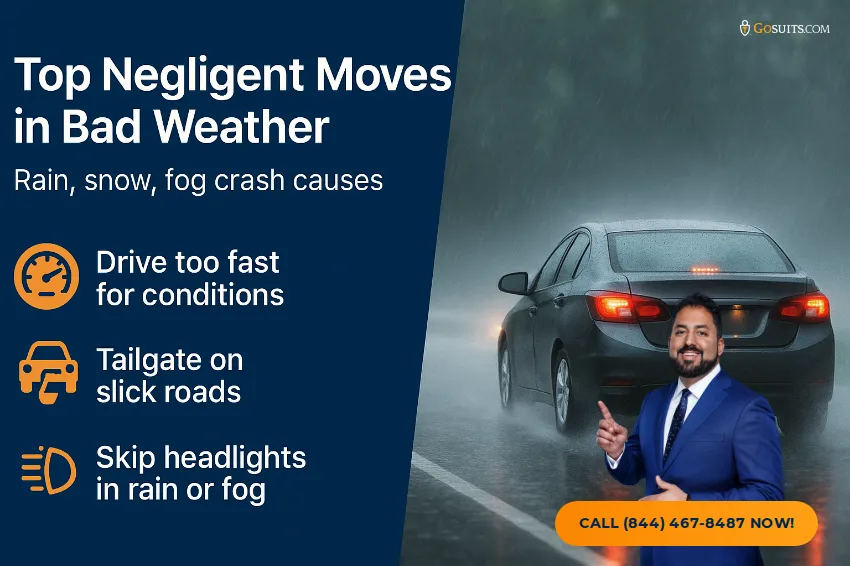
How do you prove negligence in a hydroplaning or black ice accident?
Evidence often decides whether a hydroplaning accident is negligence or an unavoidable event. Useful items include:
- Police crash report: Officers often note weather, lighting, roadway surface, and contributing factors. Obtainable in Texas via TxDOT CRIS (TxDOT Crash Reports), in California via CHP (CHP Collision Report Request), and in Illinois via ISP (Illinois State Police Crash Reports).
- Event Data Recorder (EDR) downloads: Many vehicles store pre-crash speed, brake, and throttle data. Federal regulations specify EDR data elements for equipped vehicles (49 CFR Part 563).
- Vehicle inspections: Photographs and measurements of tire tread, wiper condition, lights, and brakes can support claims about traction and visibility.
- Roadway and weather documentation: Photos of standing water or ice, public weather records, and maintenance logs matter. The FHWA tracks weather impacts on roads (FHWA Weather Crash Data), and the National Weather Service provides certified weather data.
- Witness and dashcam video: Statements and footage may show speed, headlights, and following distance.
- Scene forensics: Skid or yaw marks, vehicle rest positions, and debris fields help reconstruct how traction was lost.
For a hydroplaning accident negligence claim, the focus is whether the driver was traveling too fast for conditions, failed to keep a safe distance, or had unsafe tires. For black ice accident liability, the questions include whether the driver knew or should have known of freezing conditions and adjusted speed and following distance accordingly, and whether headlights were used to maximize visibility in low light conditions.
Does reduced visibility change the duty of care, including headlights and speed?
Yes. Statutes and common law expect drivers to adapt to visibility and traction. California’s basic speed law mentions visibility explicitly (CVC §22350), and Illinois requires speeds that are “reasonable and proper” considering weather and highway conditions (625 ILCS 5/11-601(a)). Texas requires speed control and reduced speed as necessary for weather (§545.351).
Headlights are a recurring duty in storms and fog because they improve your ability to see and be seen. California and Illinois link headlights to windshield wiper use (CVC §24400(b); 625 ILCS 5/12-201(b)). Texas requires headlamps when visibility is less than 1,000 feet or at night (§547.302).
How does comparative negligence work in bad weather cases in TX, CA, and IL?
Comparative negligence assigns percentages of fault to each party, then adjusts compensation accordingly.
- Texas: Modified comparative responsibility. If you are 51 percent or more at fault, you cannot recover. Under 51 percent, your damages are reduced by your share (Tex. Civ. Prac. & Rem. Code §33.001).
- California: Pure comparative negligence. You can recover even if you bear most of the fault, with damages reduced by your share (Li v. Yellow Cab Co.).
- Illinois: Modified 51 percent bar. You cannot recover if your fault exceeds 50 percent; otherwise, your award is reduced (735 ILCS 5/2-1116).
In practice, comparative fault arguments focus on whether each driver took reasonable steps, such as reducing speed, using headlights, maintaining tires, and leaving adequate following distance. In rain accident cases across Houston, Dallas, Austin, San Antonio, and Fort Worth, and snow and ice cases in Chicago, Naperville, Springfield, and across Cook and DuPage Counties, shared fault assessments are common when both drivers could have done more to prevent the collision.
What insurance issues arise after a weather-related crash?
Because weather-related crashes often involve disputed conduct, several insurance issues arise:
- Liability coverage disputes: Insurers may argue the weather was the sole cause, or assert a “sudden emergency” theory. Claimants counter with evidence of speed, following distance, headlights, and tire condition.
- Comparative fault adjustments: The insurer may reduce valuations based on alleged shared fault.
- PIP/MedPay and UM/UIM: In Texas, personal injury protection is offered but not mandatory, and medical payments coverage and uninsured or underinsured motorist coverage may be relevant. California and Illinois claimants also frequently use MedPay or UM/UIM when the at-fault driver is uninsured or lacks sufficient coverage.
- Commercial policies: Snow and ice car accident claims involving commercial trucks may implicate federal safety rules like 49 CFR §392.14, fleet maintenance, and company policies for hazardous weather.
Early documentation and careful communication usually improve claim outcomes. Because adverse weather disputes can get technical, many people seek help navigating liability and insurance in Texas, California, and Illinois.
What deadlines apply to file a weather-related car accident lawsuit?
Injury claims generally must be filed within:
- Texas: 2 years from the date of injury (Tex. Civ. Prac. & Rem. Code §16.003).
- California: 2 years for personal injury (CCP §335.1).
- Illinois: 2 years for personal injury (735 ILCS 5/13-202).
Claims against public entities often require earlier administrative notices. Short deadlines may apply if you allege roadway defects or negligent snow and ice maintenance by a city, county, or state agency. Filing rules differ in Travis County, Harris County, Bexar County, Tarrant County, Los Angeles County, Orange County, Alameda County, Cook County, and other jurisdictions.

What damages can be claimed in civil weather-related crash cases?
Depending on the case, recoverable damages can include medical expenses, lost income, pain and suffering, property damage, loss of use, and, in limited cases, punitive damages when conduct is egregious under applicable state law. See background on damages concepts at LII on Damages. The availability and measure of damages depend on state law and the facts of the crash, including how the weather and each driver’s conduct contributed.
How do courts view “act of God” or “sudden emergency” defenses in weather crashes?
Courts focus on whether the driver acted reasonably for the conditions. Weather alone does not absolve negligence. If the evidence shows the driver failed to reduce speed for heavy rain, drove on bald tires in snow, or did not use headlights in low visibility, the defense is less persuasive. Conversely, if a driver was proceeding cautiously and an unavoidable event occurred despite reasonable care, a court may apportion less fault to that driver. The outcomes turn on statutes like the basic speed laws and headlight requirements, physical evidence, and credible testimony.
What should you do after a weather-related crash to protect a claim?
- Call 911 and get a police report: The report records weather, visibility, and roadway surface observations. Obtainable through TxDOT, the CHP, or the Illinois State Police.
- Document the scene: Take photos or video of skid marks, standing water, snow or ice patches, damaged wipers or headlights, and tire tread.
- Identify witnesses and camera sources: Collect contact information and check for nearby dashcam, traffic, or business cameras.
- Preserve vehicle data: Ask that the other vehicle and your vehicle be preserved for inspection, including potential EDR data under 49 CFR Part 563 where applicable.
- Track weather: Save weather alerts and conditions from the National Weather Service around the time of the crash.
- Consult legal help promptly: Time limits and preservation of evidence are critical, whether the crash occurred in Houston, Los Angeles, San Diego, San Jose, San Francisco, Sacramento, or Chicago.
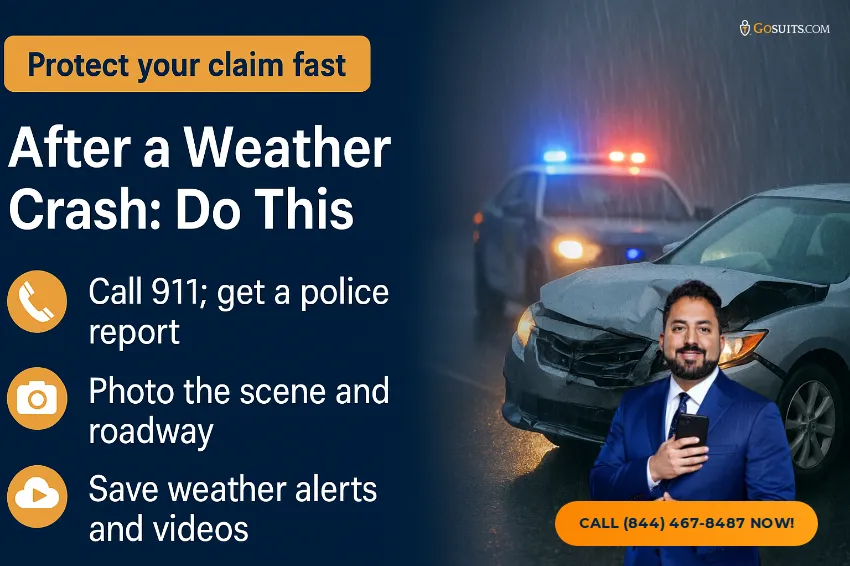
Where do storms cause more crashes locally in TX, CA, and IL?
State data sources show how rain, snow, and ice affect crash patterns:
- Texas: TxDOT publishes crash statistics and maps, including weather-related filtering options. See TxDOT Crash Statistics. In Harris County, Bexar County, and Travis County, heavy rain events can spike multi-vehicle collisions on freeways and feeder roads.
- California: CHP’s SWITRS system catalogs collisions by weather type statewide, including Los Angeles, Orange County, San Diego, and Alameda County. See SWITRS. Fog-related crashes are more frequent in certain valleys, and chain control zones in the Sierra require extra caution.
- Illinois: IDOT provides crash facts and dashboards that can be filtered by roadway condition for Chicago, Cook County, DuPage County, Naperville, and Springfield. See IDOT Crash Data.
How can GoSuits help with a weather-related car accident case in TX, CA, or IL?
Weather-related car accidents can leave you overwhelmed by medical needs, vehicle repairs, and insurance calls. A free consultation with a personal injury attorney can clarify options, help preserve time-sensitive evidence, and start building a claim that accounts for local statutes and comparative negligence rules in Texas, California, and Illinois.
What services do we provide for rain, snow, and fog crash cases?
- Immediate case assessment 24/7: We review the police report, photos, dashcam footage, and weather records. We identify likely liability issues such as driving too fast for conditions, failure to use headlights in rain or fog, and bald tires liability in car accidents.
- Evidence preservation and investigation: We request preservation of vehicle EDR data, examine tire condition and lighting systems, and obtain roadway maintenance logs when relevant. We gather NOAA weather records and FHWA references where they support the timeline and conditions.
- Claim strategy and negotiation: We prepare a demand package that addresses comparative negligence in bad weather, counters “sudden emergency” defenses, and sets out damages, including lost wages and medical expenses. For hydroplaning accident negligence or black ice accident liability, we tailor arguments to jurisdiction-specific rules and the facts.
- Litigation when needed: If a fair settlement is not reached, we file suit and move the case through discovery and pretrial motion practice in courts across TX, CA, and IL.
What availability and communication do we offer?
- Available 24/7 with immediate free consultation: You can reach an attorney and staff at all locations any time, day or night.
- Multilingual support: We provide multilingual customer service, with 24/7 Spanish and Farsi speakers available, and access to additional languages.
- Proactive updates: We set a communication plan so you receive regular case updates by your preferred method, including phone, text, or email.
What are our fee policies and cost transparency?
- No win, No Attorney Fees: You pay no attorney fees unless we obtain a recovery.
- No Hidden Administrative Fees: We explain costs upfront and provide clear, written terms so you are not surprised.
How do our tools and case workflow help your claim?
- Proprietary personal injury software: We built internal software used only by our firm to streamline investigation, prepare comprehensive demands, and manage negotiation, filing, and discovery. This helps us move faster, organize evidence such as EDR downloads and weather data, and respond quickly to insurers.
- Focused on quality, not volume: We limit caseload to maintain careful attention to the facts that matter in weather-related car accidents, like too fast for conditions, reduced speed for conditions, and failure to use headlights in rain.
What is our experience and track record?
- 30 years of combined experience: Our team has managed a wide range of motor vehicle collision claims in rain, snow, and fog.
- Litigated 1000+ cases: Settlement and verdict results are published here: gosuits.com/prior-cases.
- Complex cases handled: In matters like product liability, 18-wheeler cases, and brain or spinal injury litigation, we retain qualified professional witnesses in the state to help establish liability and damages.
- Multi-state litigation: We litigate severe injury and complex cases in Texas, California, and Illinois.
- Awards and recognitions:
- #1 Settlements and verdicts across multiple U.S. counties according to TopVerdict.
- Top 100 Settlement in Texas.
- Sean Chalaki selected Top 40 Under 40 by National Trial Lawyers.
- Recognized by Best Lawyers in 2023, 2024, 2025.
- Selected to Super Lawyers since 2021.
Past case outcomes do not predict future results. Every case stands on its own facts and law.

How are we involved in the community?
- Community engagement: Active participation with schools, chambers of commerce, and local non-profit foundations.
- Professional leadership: Service on boards for trial lawyer organizations such as the Texas Trial Lawyers Association and participation in consumer protection groups.
Where are we located and how can we help immediately?
- Texas: Attorneys and staff available 24/7 across Houston, Dallas, Austin, San Antonio, Fort Worth, and nearby counties including Harris County, Travis County, Bexar County, and Tarrant County.
- California: Support across Los Angeles, Orange County, San Diego, San Jose, San Francisco, Sacramento, and Alameda County.
- Illinois: Coverage in Chicago, Cook County, DuPage County, Naperville, and Springfield.
- Near you and ready now: If you search “rain accident lawyer near me,” “fog accident lawsuit nearby,” or “snow and ice car accident claim,” our team can begin an immediate free consultation, gather your crash details, secure the police report, and start preserving evidence.
From negotiating with insurers to litigating liability in rain, snow, and ice, we focus on building clear, evidence-backed cases under Texas, California, and Illinois law. You stay informed while we handle the heavy lifting.
Which resources and legal citations can you use to learn more?
- FHWA Road Weather Management: Weather-Related Crash Statistics
- NOAA National Weather Service: Winter Ice and Black Ice Safety
- Cornell LII: Negligence and Negligence per se
- Texas statutes: Speed and Conditions §545.351, Following Distance §545.062, Headlights §547.302, Unsafe Tires §547.612, Comparative Responsibility §33.001, Limitations §16.003
- California law: Basic Speed Law §22350, Following Distance §21703, Headlights §24400(b), Statute of Limitations CCP §335.1, Caltrans Chain Controls, Li v. Yellow Cab Co.
- Illinois law: Too Fast for Conditions 625 ILCS 5/11-601(a), Following Too Closely 625 ILCS 5/11-710, Headlights 625 ILCS 5/12-201(b), Unsafe Tires 625 ILCS 5/12-405, Comparative Fault 735 ILCS 5/2-1116, Statute of Limitations 735 ILCS 5/13-202
- Commercial vehicles in hazardous weather: 49 CFR §392.14
- Event Data Recorders: 49 CFR Part 563
- Police crash reports access: TxDOT, CHP, Illinois State Police
- State crash data portals: TxDOT Crash Statistics, CHP SWITRS, IDOT Crash Data
